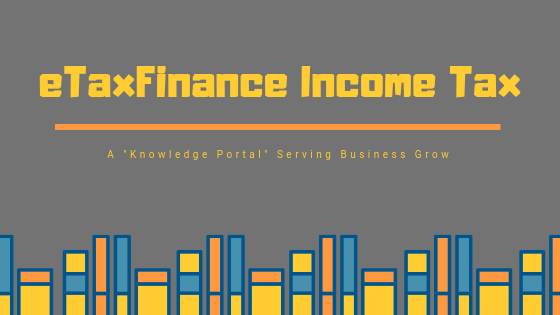The Income Tax Department has categorised taxpayers into many groups based on income and its source. The income tax return (ITR) form used by many, if not most, salaried individuals is ITR-1. This ITR form is also known as Sahaj. ITR-1 is probably the easiest form to fill since it requires information about income from a limited number of sources such as salary, house property etc.
ITR-1 form is for resident individuals whose total income does not exceed Rs. 50 lakh during the financial year. It is primarily used by salaried individuals. A taxpayer can submit Form ITR-1 electronically. This can be done via a completely online method or in a partially online and partly offline method.
Who are Eligible to File Income Tax with ITR1 Form?
ITR-1 can be filed by a Resident Individual whose:
- Total income does not exceed ₹ 50 lakh during the FY
- Income is from salary, one house property, family pension income, agricultural income (up to ₹5000/-), and other sources, which include:
- Interest from Savings Accounts
- Interest from Deposits (Bank / Post Office / Cooperative Society)
- Interest from Income Tax Refund
- Interest received on Enhanced Compensation
- Any other Interest Income
- Family Pension
- Income of Spouse (other than those covered under Portuguese Civil Code) or Minor is clubbed (only if the source of income is within the specified limits as mentioned above)
Who are not Eligible to File Income Tax with ITR1 Form?
ITR-1 cannot be filed by any individual who:
- is a Resident Not Ordinarily Resident (RNOR), and Non-Resident Indian (NRI)
- has total income exceeding ₹ 50 lakh
- has agricultural income exceeding ₹ 5000/-
- has income from lottery, racehorses, legal gambling etc.
- has taxable capital gains (short term and long term)
- has invested in unlisted equity shares
- has income from business or profession
- is a Director in a company
- has tax deduction under section 194N of Income Tax Act
- has deferred income tax on ESOP received from employer being an eligible start-ups
- owns and has income from more than one house property
- is not covered under the eligibility conditions for ITR-1.
What is the Last Date for Filing Form ITR-1?
Taxpayers need to submit the duly completed Form ITR-1 by 31st July of the assessment year to file taxes for the previous year. For example, if the income was earned anytime between April 1, 2021 and March 31, 2022, the assessment year for the same would be 2022-23. In this case, the ITR-1 Form needs to be submitted on or before 31st July, 2022.
What is the Penalty on Late Filing of ITR-1?
In case the taxpayer fails to complete the tax return formality within these timelines, he/she can file a “Belated Return” any time before 31st March, 2023. However, late filing attracts penalty. If the return is filed 3 months before the end of the relevant assessment year or before the assessment completion (whichever is earlier), a late filing penalty of Rs. 5,000 shall be payable. However, in case the income of the person is not more than Rs. 5 lakh, the maximum late filing fee to be paid is limited to Rs 1,000.
What are the documents needed to file ITR-1?
Documents which you need to file ITR-1 form are:
- Form 16: Issued by all your employers for the given Financial Year
- Form 26AS: Remember to verify that the TDS mentioned in Form 16 matches the TDS in Part A of your Form 26AS
- Receipts: If you have not been able to submit proof of certain exemptions or deductions (such as HRA allowance or Section 80C or 80D deductions) to your employer on time, keep these receipts handy to claim them on your Income Tax Return directly.
- PAN card
- Bank investment certificates: Interest from bank account details – bank passbook or FD certificate
How to fill ITR 1?
ITR Form 1 is structured in five parts and two schedules for easy understanding. These are :
Part A – General Information
This is the first section on the form. This sections will contain your personal details such as
- First name, last name, and middle name if any;
- PAN Number
- Age
- Gender and date of birth as per PAN card.
- The details pertaining to your ward and the assessing officer’s details (if known),
- Address for Communication
- Contact number
- City and State
- Date of filing
- aadhaar details
Part B: Total income for the financial year
The section B contains information about your gross total income.
- Income from salary
- property and other sources
Part C: Details of all deductions and total taxable income
It includes details of all deductions claimed under Section 80C to 80U of the Act. These include investments, Mediclaim, LIC Premium, Contribution to Pension Account, Education Loan, Donation, etc. This part also includes the Taxable Income which comes after deducting the amount of Total Deductions from Gross Total Income.
Part D: Computation of Tax Payable
This includes all the details relating to calculation of the final tax payable-
- D1: Tax Payable on total income: To be calculated as per tax computation table at C2.
- D2: Rebate u/s 87A: Deduction from income tax to a resident individual, whose total income is less than 500,000 INR of an amount equal to such Income Tax or an amount of 12,500 INR whichever is less.
- D3: Tax After Rebate: Tax payable after rebate (D1-D2)
- D4: Cess: Calculate health and education cess (including secondary and higher education cess) at 4 % of D3.
- D5: Total Tax & Cess: D3+D4
- D6: Relief u/s 89 : For claiming relief, if any, allowable under Section 89 in respect of arrears or salary advances received during the past Financial Year.
- D7: Interest u/s 234 A : For calculation of 234A interest as per the IT Act, 1961.
- D8: 234 B : For calculation of 234B interest as per the IT Act, 1961.
- D9: 234 C : For calculation of 234C interest as per the IT Act, 1961.
- D10: 234F : For filing income tax return after the due date, late fee u/s 234F needs to be specified in this column.
- D11: Total Tax and Interest : D5+D7+D8+D9+D10-D6
- D12: Total Taxes Paid: Total tax paid (Advance Tax + Self-assessment tax) given in Column 4 of Schedule IT and relevant TDS given in Column 6 of Schedule TDS to be given. TDS and Tax Payment details to be verified using Form 26AS.
- D13: Amount Payable :Tax payable amount to be filled, in case D11 is greater than D12.
- D14: Refund : Amount to be filled in case D12 is greater than D11.
Exempt Income :- 10(34) : Exemption in regard to dividend income from Indian company
- Agriculture Income : If agricultural income exceeds? 5,000/-, please use ITR-2.
- Others
Part E: Other Information
This part also includes the details of all the bank accounts held in India at any time during the year for which the return is filed.
- Details such as IFSC Code, Name of Bank, and Account Number, are also to be provided here.
- Details of dormant accounts which are not operational for more than 3 years is not mandatory.
- Select one or more bank accounts in which you wish to receive income tax refunds. In case more than one bank is selected, CPC will have the final choice as to the selection of bank account in which refund will be credited.
Schedule IT
This includes all the Details of tax payments including Advance Tax and Self – Assessment Tax Payments. Advance Taxes and Self-Assessment challan deposited details are required. These are :
- BSR Code of the Bank
- Date of Deposit in the Bank
- Serial Number of Challan through which the payment is made
- The amount of tax paid
Schedule TDS/TCS
This includes the Details of Tax Deducted/Collected at Source on Income Other than Salary. These details can be based on Form 16 A issued by various Deductors in respect of interest income and other sources of income. This schedule contains the following details:
- Tax Deduction Account Number (TAN) of the Deductor(s)/Collector
- Name of the Deductor/Collector
- Gross Receipts which is subject to tax deduction /collection
- The year of such deduction/collection
- The amount of tax deducted/collected and
- The amount of tax deducted/claimed this year
Procedure for Completing Form ITR-1 Online
Given below is the step-by-step process to fill and submit your ITR-1 Sahaj Form online:
STEP 1: Visit the Income Tax Department website
STEP 2: Register in case you are a new user or login if you already have an account.
STEP 3: Go to the ‘e-File’ drop-down menu and choose the ‘Income Tax Return’
STEP 4: Select the assessment year and submission mode
STEP 5: To file a fresh ITR, click on ‘Start New Filing’
STEP 6: Select your applicable status, i.e., whether you are an individual/HUF/others and click on ‘Continue’.
STEP 7: Choose ITR-1 Form to proceed further.
STEP 8: Select the reason for which you are filing the ITR.
STEP 9: Based on the information available with the Income Tax Department, you will get your pre-filled return. To proceed further, validate the details in each section such as your personal information, gross total income, total deductions, taxes paid and total tax liability.
STEP 10: Fill in details that were not filled in earlier.
STEP 11: Confirm your ITR-1 summary details.
STEP 12: Make the payment of the required tax, if any.
STEP 13: Preview and submit your ITR.
For more details contact out team at +91-7991109093 or drop email us at [email protected]
Note: This Post was last updated on July 22, 2022
Disclaimer: The entire contents of this document have been prepared on the basis of relevant provisions and as per the information existing at the time of the preparation i.e. July 22, 2022. Although care has been taken to ensure the accuracy, completeness and reliability of the information provided, We assume no responsibility therefore. Users of this information are expected to refer to the relevant existing provisions of applicable Laws. The user of the information agrees that the information is not a professional advice and is subject to change without notice. We assume no responsibility for the consequences of use of such information. IN NO EVENT SHALL WE SHALL BE LIABLE FOR ANY DIRECT, INDIRECT, SPECIAL OR INCIDENTAL DAMAGE RESULTING FROM, ARISING OUT OF OR IN CONNECTION WITH THE USE OF THE INFORMATION.


